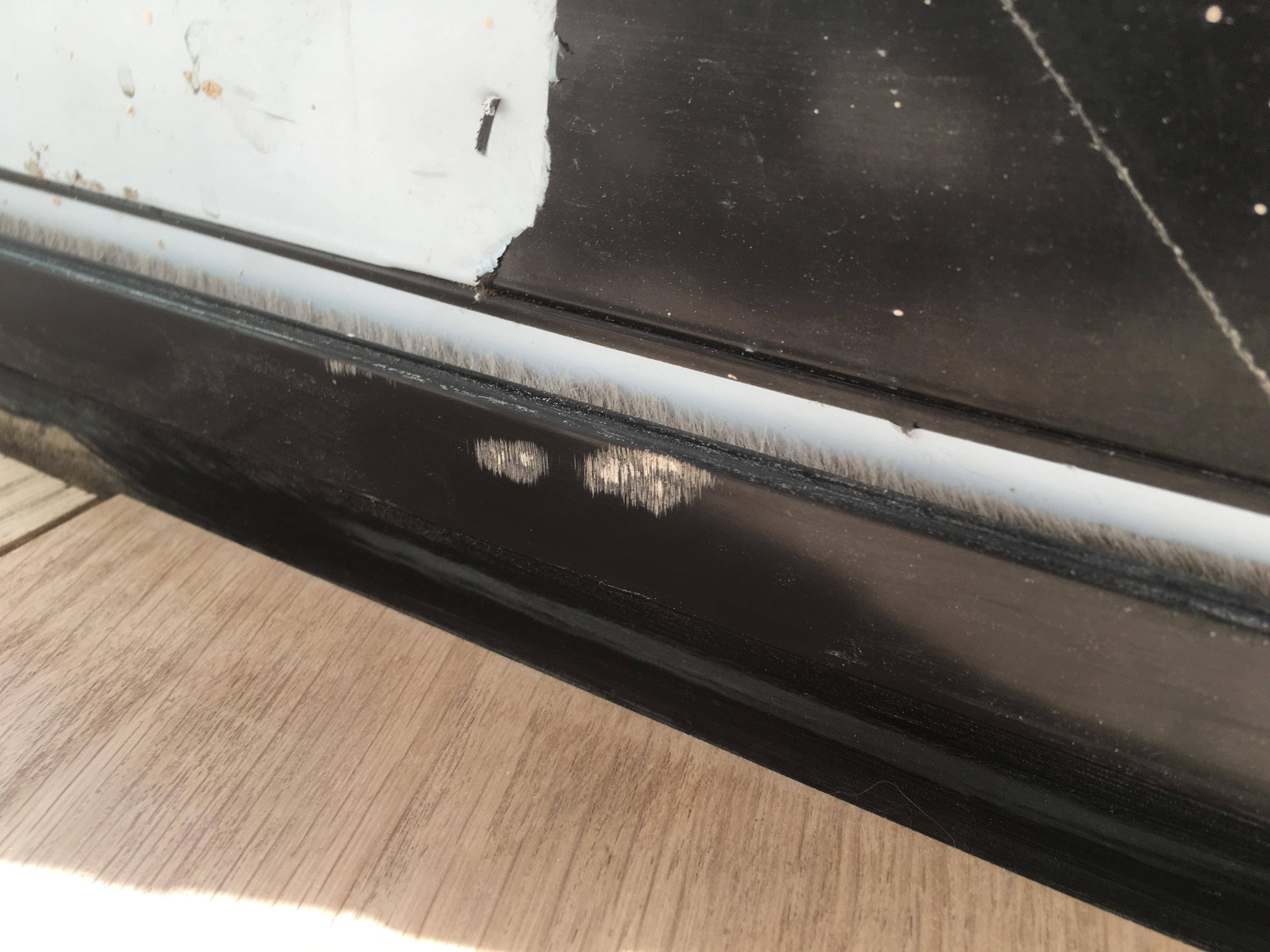I have a set of folding doors (interior <-> exterior) that have been badly scraped and scratched during a renovation project. I have purchased the correct colour touch up paint from the manufacturer, but there are no instructions on how to apply.
My initial thoughts are that I should sand down the area with 60 then 120 grade paper. Clear the area with white spirit and then apply the touch up paint. Does this sound about right? Is there a better way?
The finish of the frame is very smooth. Im worried that if I use a paint brush it will be streaky. What applicator should I use?
Note: the white area is what's left of the protective plastic, my concern is the abrasion below it.

